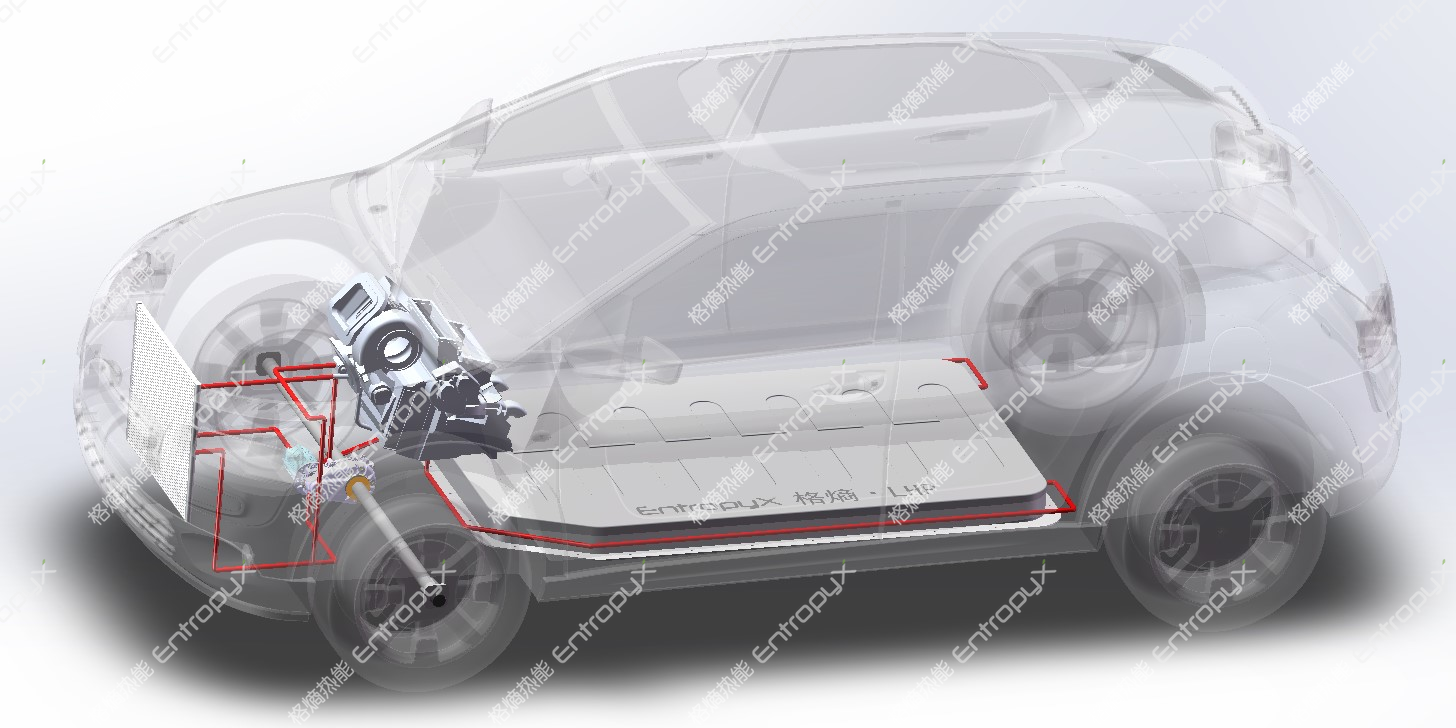Thermal Management of New Energy Vehicles
New energy vehicles (NEVs) have replaced traditional generators with a new type of electric motor drive model. The power battery section has been increased. The thermal management of new energy vehicles mainly includes three major parts: Battery thermal management, Cabin thermal management, and Powertrain thermal management.

1.Battery thermal management:Battery packs in NEVs generate a significant amount of heat and require cooling to prevent overheating, which can cause damage or reduce battery life.
2.Cabin thermal management:2.NEVs use electric heating and cooling systems to maintain comfortable temperatures for passengers. It can reduce tiredness of drivers and improve driving safety.
3.Powertrain thermal management:3.NEVs use electric motors and inverters to generate and control power, which also generate heat and require efficient cooling systems to maintain optimal performance.
EntropyX has designed a self-cooling thermal control subsystem based on loop heat pipes, which takes the heat output of batteries, electric drives, and electronic controls as the thermal control requirements. As shown in the following figure:

- When the vehicle is running, the heat generated by the electric-drive oil cooler and electric-drive inverter is 10% of the total power output of the vehicle. This is the largest source of heat in the system and is greater than the heat generated by the battery and electronic control systems combined. Therefore, the electric-drive system is used as a parallel-drive thermal load.
- The heat exchange between the working fluid and the water circulation system within the plate heat exchanger is used to dissipate heat from the battery, electric motor and control system.
- The self-cooling subsystem takes the battery thermal control index as the temperature control standard.
The self-cooling thermal control subsystem and the cabin thermal management coupled through a water cycle system to form a vehicle thermal management system,as shown in the following figure:
